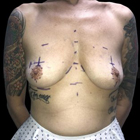When people look at your abdominal bulge and congratulate you on your happy news, it’s demoralising having to say no, you’re not pregnant again – it’s just what having a baby did to your figure last time.
While you may feel others’ eyes are always on your tummy, you are not alone: the abdominal muscles’ reluctance to knit back together after pregnancy is something that many women experience.
And while that goes on below the surface, the skin might not be behaving as you wish either: stretched beyond its elasticity, it now crepes across your abdomen – a sight you want to keep well and truly covered up.
Mr Maisam Fazel sees many women in his Essex tummy tuck clinic, keen to regain the contours of their pre-baby self. While they are certain they want the results, they may have concerns about some aspects of the procedure – and one theme often discussed is that of pain.
What does the procedure involve?
A tummy tuck – or abdominoplasty – is carried out when you are under general anaesthetic so you won’t feel a thing. The surgeon will make two incisions: one across the lower abdomen and one around the belly button.
Lifting the skin to access the abdominal wall, they can tighten and stitch the muscles back into position before removing any excess fat. The skin is then re-draped, pulled taut, and stitched down, and surplus skin is excised, leaving a firmer, shapelier abdomen. You will then stay in hospital overnight before being sent home to rest and recover.
Will it hurt afterwards?
In the immediate aftermath of your tummy tuck, you will feel bruised and tender and there will be a degree of swelling.
Most Essex tummy tuck patients describe feelings of discomfort rather than pain and by following your surgeon’s aftercare instructions (includes guidance on which movements/actions to avoid and for how long you should wear a compression garment), you can keep this to a minimum while supporting optimum healing.















